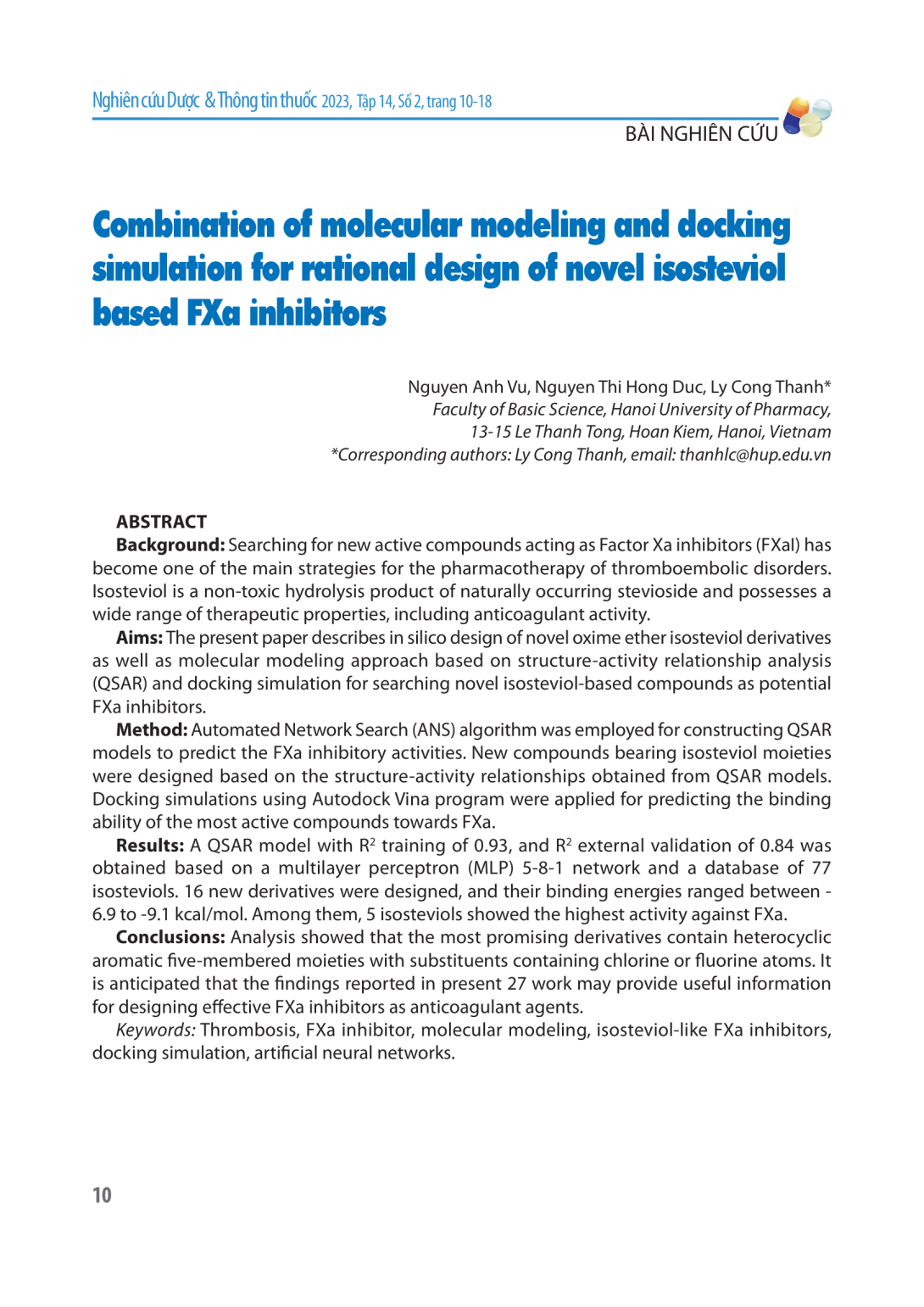
Ứng dụng phương pháp silico trong thiết kế các dẫn xuất isosteviol mới hướng tác dụng ức chế FXa. Phương pháp: Mạng nơ ron nhân tạo được sử dụng để xây dựng các mô hình liên quan định lượng cấu trúc-hoạt tính sinh học (QSAR) nhằm dự đoán tác dụng ức chế FXa. Mô phỏng docking phân tử được áp dụng để dự đoán khả năng liên kết của các hợp chất đối với FXa. Kết quả nghiên cứu: Mô hình QSAR áp dụng thuật toán mạng perceptron một lớp với cấu trúc 5-8-1 xây dựng trên 77 cấu trúc isosteviol cho hệ số xác định trên tập huấn luyện (R2) là 0,93 và trên tập đánh giá ngoài là 0,84. 16 dẫn chất mới của isosteviol được thiết kế có năng lượng liên kết với FXa dao động từ -9,1 tới -6,9 kcal/mol. Từ các chất mới thiết kế, 5 chất được xác định có hoạt tính mạnh nhất. Kết luận: Các chất mới thiết kế thể hiện hoạt tính tốt, là cơ sở lý thuyết cho tối ưu hóa cấu trúc và phát triển thuốc chống đông máu mới hướng ức chế FXa.
The present paper describes in silico design of novel oxime ether isosteviol derivatives as well as molecular modeling approach based on structure-activity relationship analysis (QSAR) and docking simulation for searching novel isosteviol-based compounds as potential FXa inhibitors. Method: Automated Network Search (ANS) algorithm was employed for constructing QSAR models to predict the FXa inhibitory activities. New compounds bearing isosteviol moieties were designed based on the structure-activity relationships obtained from QSAR models. Docking simulations using Autodock Vina program were applied for predicting the binding ability of the most active compounds towards FXa. Results: A QSAR model with R2 training of 0.93, and R2 external validation of 0.84 was obtained based on a multilayer perceptron (MLP) 5-8-1 network and a database of 77 isosteviols. 16 new derivatives were designed, and their binding energies ranged between - 6.9 to -9.1 kcal/mol. Among them, 5 isosteviols showed the highest activity against FXa. Conclusions: Analysis showed that the most promising derivatives contain heterocyclic aromatic ve-membered moieties with substituents containing chlorine or uorine atoms. It is anticipated that the ndings reported in present 27 work may provide useful information for designing eective FXa inhibitors as anticoagulant agents.
- Đăng nhập để gửi ý kiến
